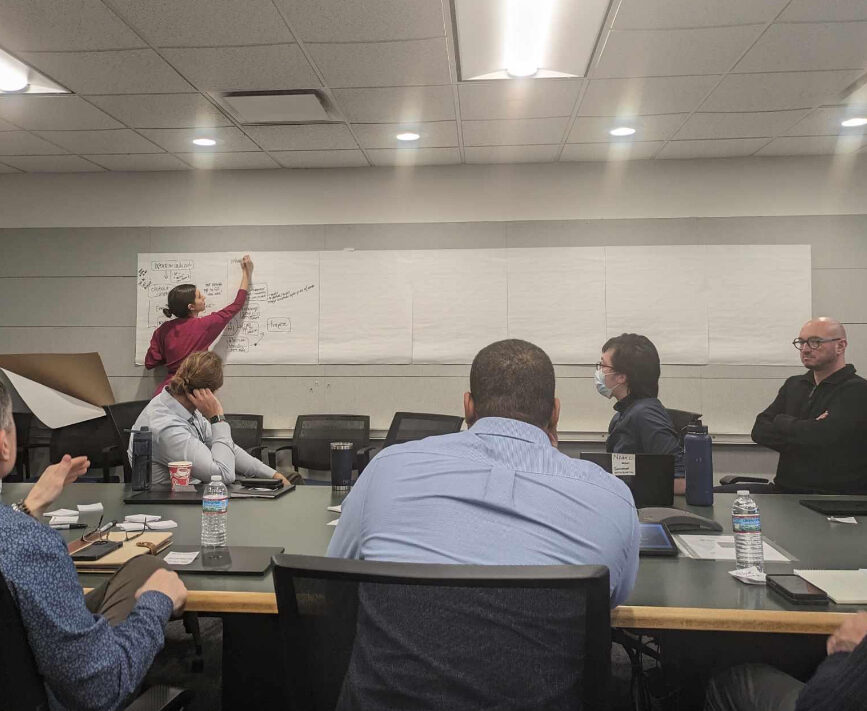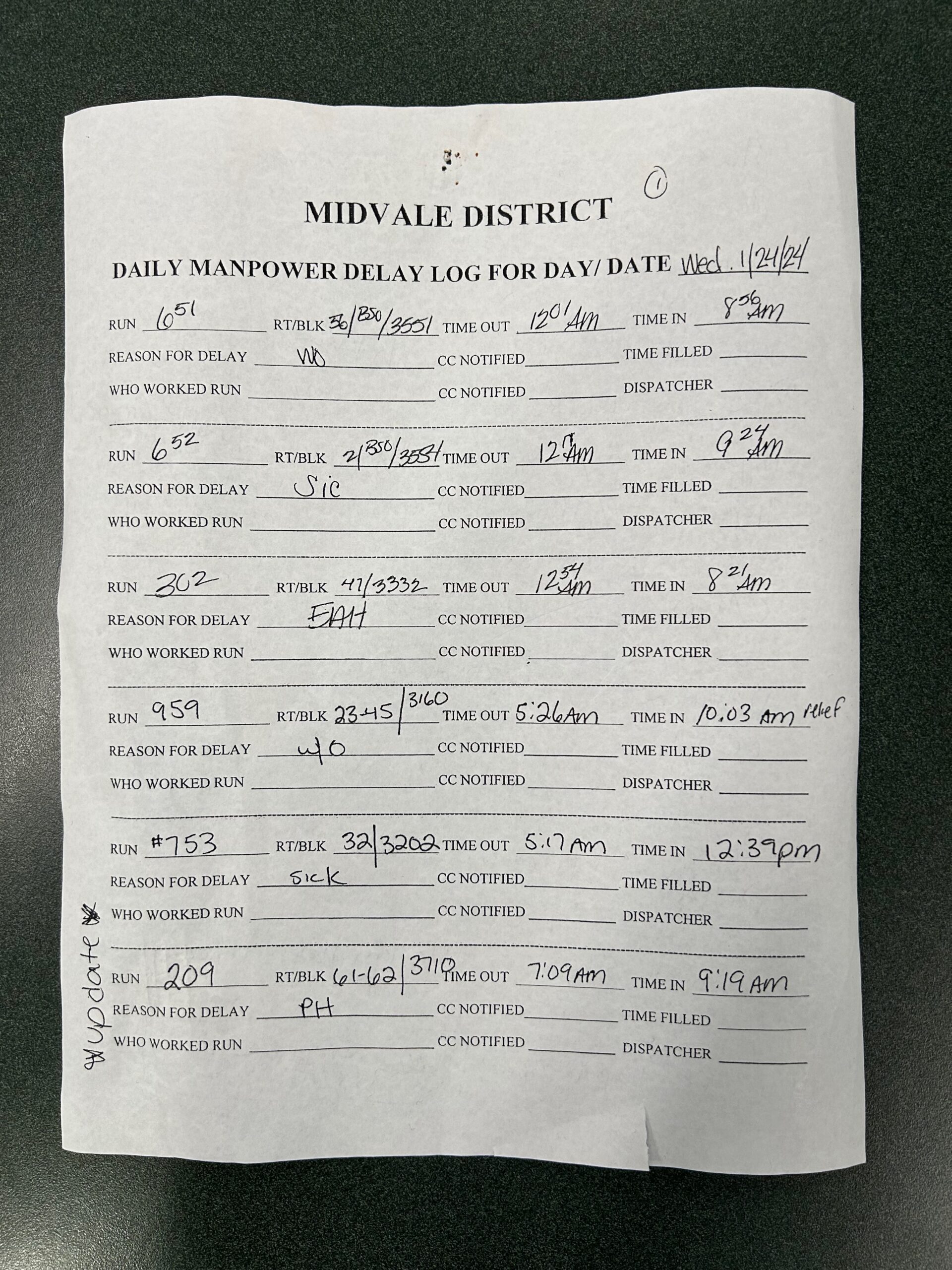To their dismay, Philly bus riders recently noticed more cancellations and missed trips on their transit apps.
Before you gripe: That may actually be a sign of positive upgrades at SEPTA.
So-called ghost buses, or rides that say they’re scheduled to come but never show up, are usually caused by early-morning callouts from operators, SEPTA technologists told Technical.ly. These callouts used to easily get lost in the shuffle, so the related buses were never removed from the system — causing transit apps to show riders a scheduled bus that just never arrives.
A simple form now means you’ll know about cancellations sooner. That’s thanks to the “Ghostbus-ters,” an affectionate name for a multi-department coalition of workers tasked with finding a solution.
“One of the challenges of this problem is that it did lie at the process level, which touched a lot of different departments,” said Katie Monroe, SEPTA project manager for service disruption communications. “So there’s no one department that could have just solved it on their own.”

After a full day mapping out the old system, Monroe and other leaders in the cross-department coalition spotted kinks preventing riders from getting real-time information.
It all goes back to the bus operator shortage, or not having enough drivers to cover every route. When someone can’t make their shift, for whatever reason, the problem multiplies. Fixing the operator shortage has proven to be an ongoing, difficult task. Instead, the team focused on the symptom that impacted riders the most: No-show transit.
The answer, the team decided, was more public information about those issues, even if it could mean a growing reputation for unreliable buses.
A simple tech tweak with a big impact
In the past, bus operator callouts worked like most other jobs. The worker calls before their shift and reports it to whoever manages the schedule. With a facility like SEPTA that relies on each individual for smooth operation, even one disruption sets off the whole balance.
When that doesn’t get communicated up the system in time, riders waiting for a scheduled bus have no way of knowing it won’t arrive. That can mess up their commute — or any other time-sensitive travel.
The team behind the upgrade made site visits to the SEPTA control centers to observe the process in person before coming up with the idea for a “one-stop shop,” said Brandon Hoffman, director of transit.

Those visits helped spotlight the small issues that can snowball into bigger disruptions. For example, the protocol required using paper documents to officially record the callout and send the information to relevant departments. But the photocopier “wasn’t even in the same room” as the people getting the callout messages, Hoffman said.
The ghostbus-ters came up with a pretty simple answer.
It’s “not rocket science,” said Yannick Baudru, director of emerging and specialty technologies, “we essentially recreated the paper form and put it online.”
Instead of a paper sheet, callouts now come through a simple online form, which also includes a tab to add the bus back to the schedule if they find coverage, Baudru said.
From there, the information automatically gets pushed out through SEPTA’s programming APIs — the software communication interface — to in-house and third-party apps, according to Baudru. It all happens nearly instantly, whereas before it could take 5 to 10 minutes to cancel one trip on systems that didn’t communicate as quickly.
It also helps that there’s already a strong, industry-standard method in place across transit apps to communicate these types of information: GTFS-Realtime, which Monroe, the service disruption project manager, called the “coolest success story of public data APIs.”
GTFS-Realtime was an expansion of the original GTFS API developed between Google and a transit agency in Portland, Oregon, nearly two decades ago. The goal was to create a standardized data format for public transportation and other related geographic information. In 2011, developers expanded it to stay up-to-date in real-time.
“Those cancelations [are] part of this broader set of standardized, real-time information that is publicly available to any developer who wants to work with it,” Monroe said. “You could go build an app with it right now if you want.”

Next steps: Digital signage to spread the word about route updates
Riders who don’t rely on the apps for their daily routines won’t get the updates. They’ll still have to rely on paper signage when SEPTA has the capacity to put it up or call customer service.
The agency is working on digital boards at bus stops to communicate these real-time updates, according to SEPTA.
“Real-time information requires tech,” Lex Powers, director of service information design, told Technical.ly. “We are working on ways that we can get digital signage out to more locations, especially with the focus on bus riders.”
But the agency hasn’t officially announced that plan, and wasn’t ready to share more details. It only recently got countdown clocks up along the Market-Frankford Line subway. To date, the only real-time info at bus stops has been provided via a partnership between the city’s transportation office and Intersection, the agency in charge of bus stop advertising.
Plus, with 13,000 bus stops around the city, even when the project is underway, it’s likely to take a while.
The lessons learned from the Ghostbus-ters project will inform tech and other upgrades going forward, according to Monroe. For example, how the team can make a major change within a tight budget. It was just staff time, she said, with no additional consultants or software purchases.
Plus, they’ve come to accept that even if more communication about schedule changes means vocal rider discontent, at least riders can plan an alternate commute.
The Ghostbus-ters still meet regularly, too, making an effort to keep improving the new system.
“We want to make sure we’re putting the right information so that way you can get the tool to actually work the way it’s supposed to work,” Hoffman said. “Just continuing to finetune what we’re doing with this tool.”







